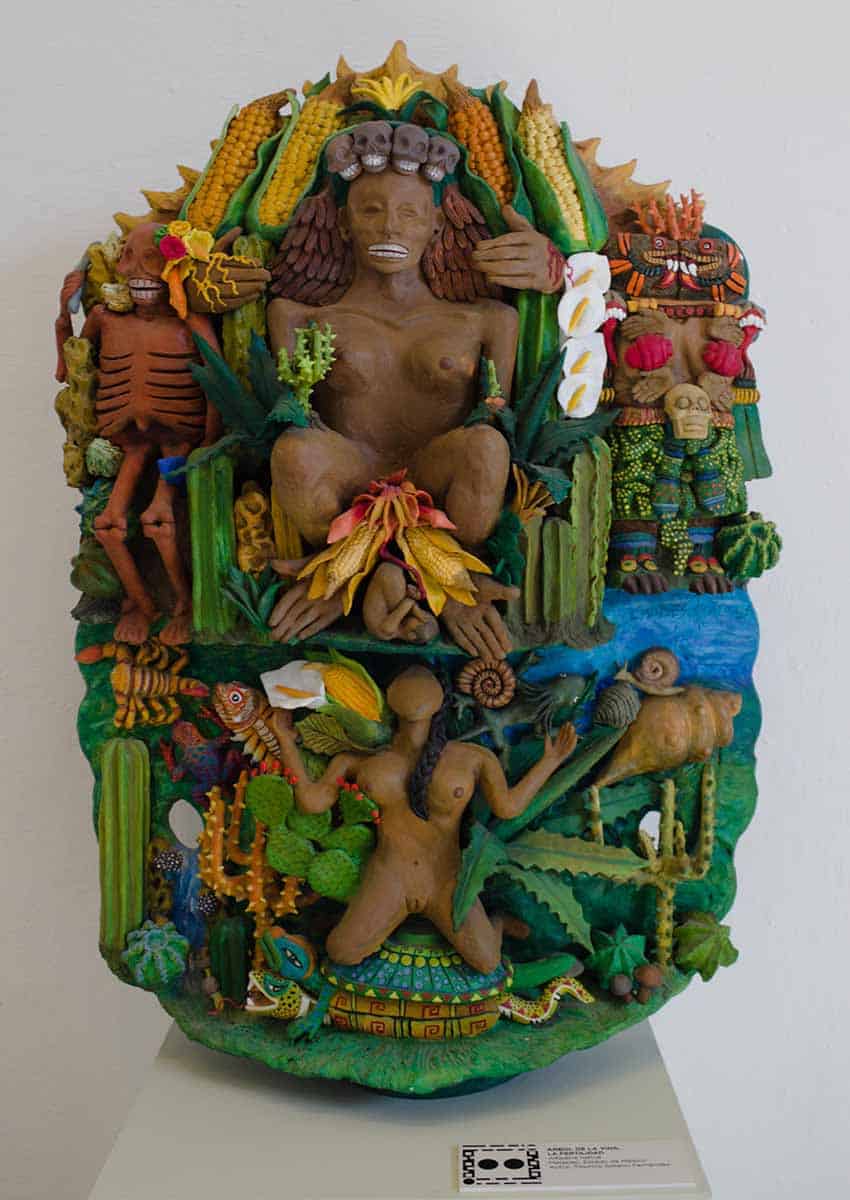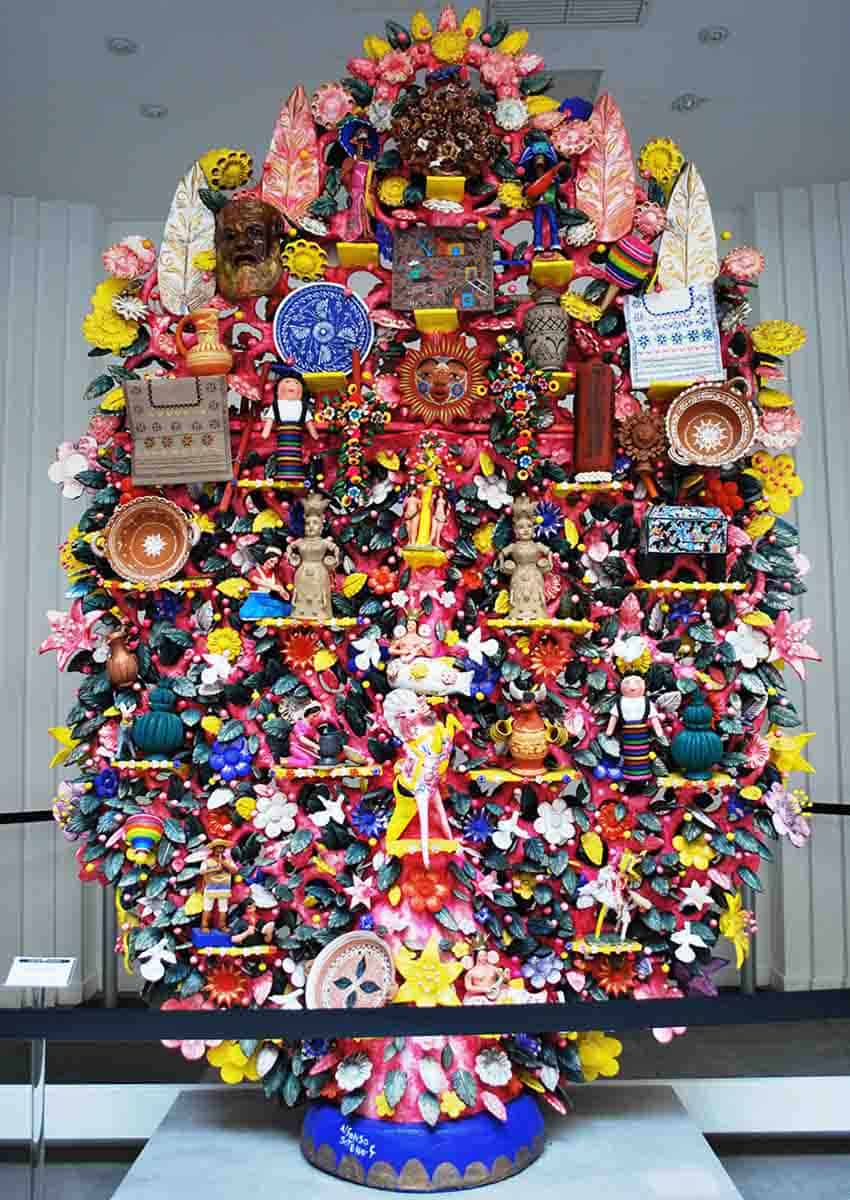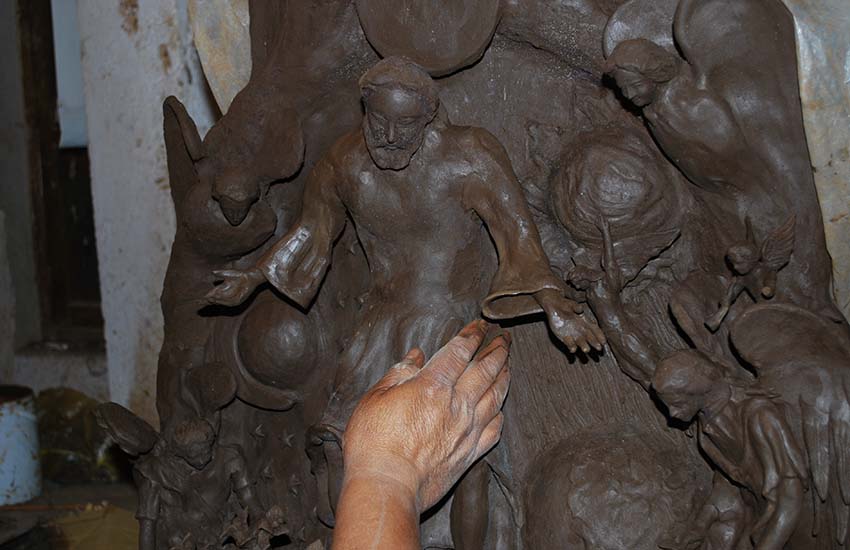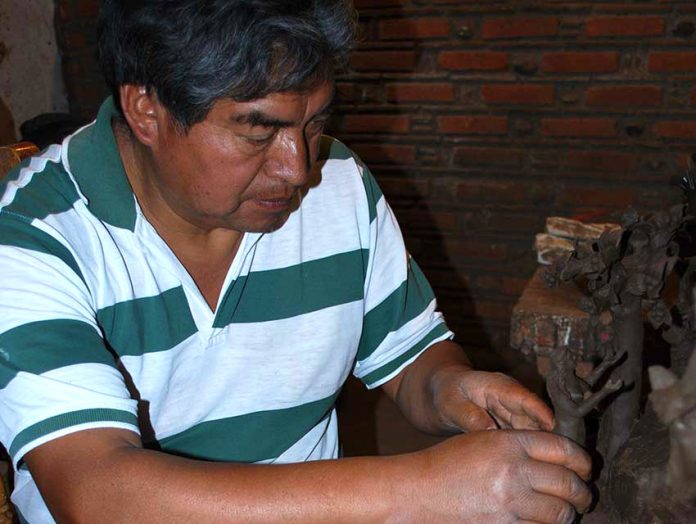On March 20, 2022, Mexico’s world of folk art lost one of its masters.
Tiburcio Soteno was not just a fine ceramicist, he was a central figure in a community’s struggle to maintain its identity in the face of sprawling urbanization.
For almost all of its history, Metepec, México state, was a rural farming community with an important pottery industry dating back to the pre-Hispanic period. Today, if you go into the town’s historic center, you can see that rural heritage in the church and the masonry houses, whose mortar joints are decorated with small pebbles to create a unique look.
However, that ancient charm stops abruptly a couple of blocks from the church as you enter an unending sea of often unpainted cinder block construction. Land prices driven up by local growth and the rise of bedroom communities catering to those working in the western part of Mexico City means that farming is all but extinguished here.
But pottery manages to hang on.

The oldest forms are utilitarian, especially the making of pots called cazuelas, which are often used for cooking mole sauce and rice. But in the last century, in response to changes in the market, many of the town’s artisans began shifting to decorative items, such as sun-and-moon wall decorations and mermaid figures.
But perhaps Metepec’s most important contribution to Mexican folk art is its “trees of life” sculptures.
Originally decorated candle holders, these winding, ornate tree sculptures have since taken on a life of their own, even losing spaces to put any candles. The most traditional of these is a tree with leaves and animals representing the Garden of Eden and figures of Adam and Eve. However, they have since evolved to include other themes; even the tree part itself can be stylized to the point that it becomes an abstract geometric support structure.
Metepec’s trees of life are most popular in central Mexico, including Mexico City, but are also well-known worldwide among Mexican folk art collectors.
The Soteno family has been instrumental in the development of these sculptures. Both of Tiburcio’s parents were potters, but it was his mother, Modesta Fernández, who began to experiment with more decorative pieces in the first half of the 20th century.
Her success changed the family’s fortunes.

All of Fernández’s children went into ceramics, and all started working when they were children. However, Tiburcio became the most recognized for his technique, creativity and innovation.
Over a six-decade career, he created numerous mermaids, Nativity scenes and even soldier figures. However, it is his work with the trees of life that earned him the title of “Grand Master of Folk Art” and led him to being included in Fomento Cultural Banamex’s prestigious registry of Mexico’s best artisans.
I was extremely fortunate to meet Maestro Tiburcio a few years ago at his family’s workshops. Like many intergenerational artisan clans, there is an informal apprenticeship system by which the next generation grows up with their hands in clay. A gracious host, Tiburcio gave us a full tour and demonstration. The fact that he had created works for museums and other collections around the world never went to his head.
His trees’ structures consist of a wire “skeleton,” over which clay is molded by hand. Then comes the arduous work of creating and placing the nearly infinite number of elements: for Tiburcio, only a few highly repetitive elements, such as leaves, were done with molds; everything else, including all the painting, was done freehand.
Tiburcio and his family have made pieces as small as several centimeters to those over five meters high, each with their own technical challenges. But it was their creativity that brought in commissions to create unique tree sculptures, such as ones based on the Laura Esquivel novel Like Water for Chocolate, on Dante’s Inferno, on the life of Juana Inés de la Cruz, and on the 2010 Bicentennial of Mexico’s Independence.
In fact, their success has led to most of the family’s business being special orders.

Tiburcio was instrumental in passing on his mother’s innovative spirit. Rather than resting on laurels, he encouraged following generations to continue to improve and innovate. The family is so prominent in Metepec because there are four generations of clay-working Sotenos.
And Tiburcio’s sons Carlos, Saul and Israel are all noted artisans, as is nephew Oscar, all with pieces in noted public and private collections in North America, Europe and Asia.
The maestro may no longer be with us, but he ensured that his legacy always will be.
Leigh Thelmadatter arrived in Mexico 18 years ago and fell in love with the land and the culture in particular its handcrafts and art. She is the author of Mexican Cartonería: Paper, Paste and Fiesta (Schiffer 2019). Her culture column appears regularly on Mexico News Daily.
